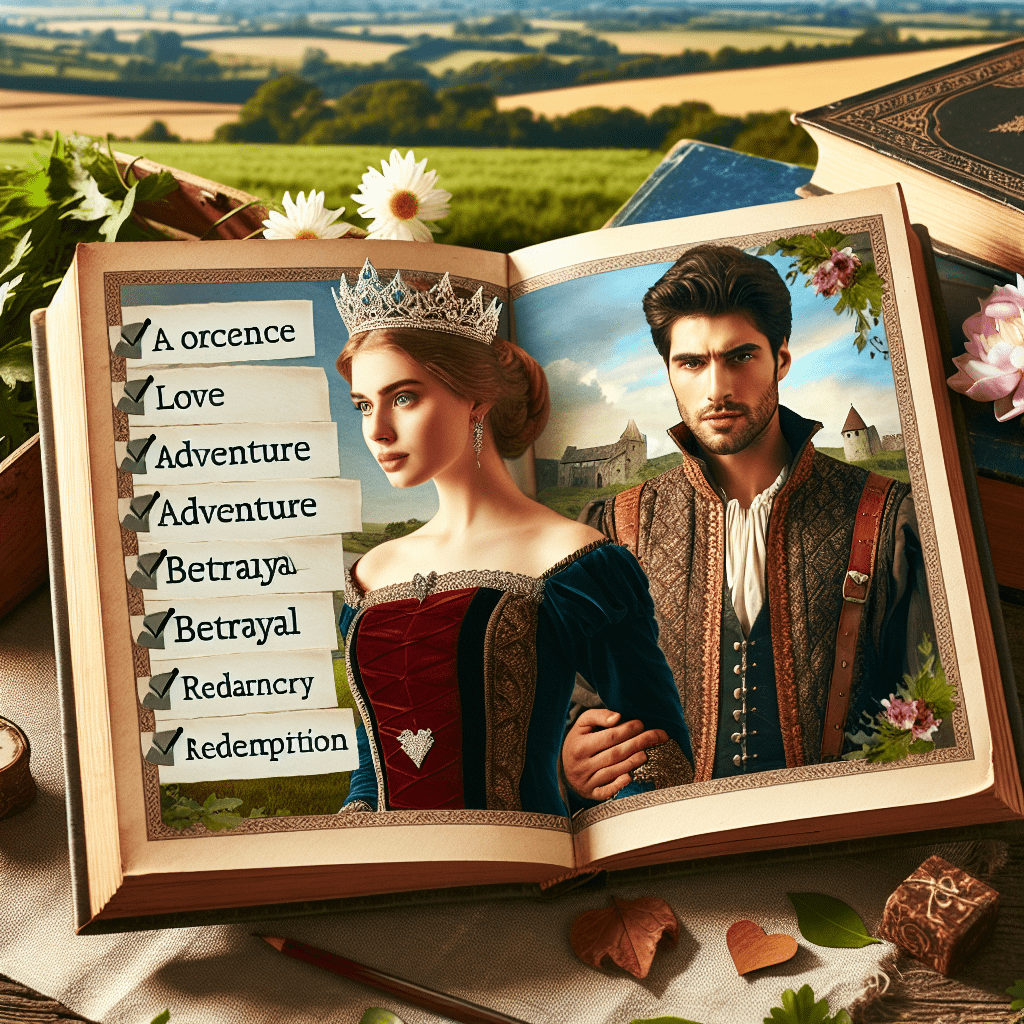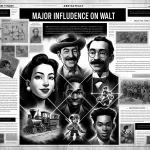-
Tartalomjegyzék
- Overview of The Princess Bride Book Summary
- Key Themes in The Princess Bride
- Character Analysis of Westley
- The Role of Buttercup in The Princess Bride
- The Importance of Inigo Montoya’s Revenge
- The Significance of Humperdinck as an Antagonist
- The Impact of Friendship and Loyalty in The Princess Bride
- KÉRDÉSEK ÉS VÁLASZOK
“Adventure, romance, and wit collide in ‘The Princess Bride’: a timeless tale of true love and the battle against tyranny.”
“The Princess Bride,” written by William Goldman, is a beloved fantasy adventure novel that intertwines romance, humor, and action. The story follows the journey of Buttercup, a beautiful young woman, and her true love, Westley, as they navigate a world filled with danger, deceit, and adventure. The narrative is framed as a “classic tale” that Goldman presents as an abridged version of a book by S. Morgenstern, adding a layer of metafiction. Key themes include the nature of true love, the struggle between good and evil, and the importance of perseverance. The characters, such as the cunning Vizzini, the gentle giant Fezzik, and the enigmatic Inigo Montoya, each contribute to the rich tapestry of the story, making it a timeless tale that resonates with readers of all ages.
Overview of The Princess Bride Book Summary
“The Princess Bride,” a novel by William Goldman, is a unique blend of adventure, romance, and satire that has captivated readers since its publication in 1973. The story is framed as a fairy tale, narrated by Goldman himself, who presents it as an abridged version of a book by S. Morgenstern. This clever narrative device sets the stage for a tale that is both whimsical and profound, inviting readers to engage with the text on multiple levels. The plot centers around the beautiful Buttercup, a young woman living in the fictional land of Florin, who falls in love with a farm boy named Westley. Their romance, however, is thwarted when Westley leaves to seek his fortune, only to be reported dead at the hands of the Dread Pirate Roberts.
As the story unfolds, Buttercup reluctantly agrees to marry Prince Humperdinck, the heir to the throne of Florin, despite her enduring love for Westley. The narrative takes a dramatic turn when Buttercup is kidnapped by a trio of criminals: Vizzini, a cunning Sicilian; Inigo Montoya, a skilled swordsman seeking revenge for his father’s murder; and Fezzik, a gentle giant with immense strength. Their plan is to incite a war between Florin and the neighboring country of Guilder, but their scheme is thwarted by the unexpected return of Westley, who has assumed the identity of the Dread Pirate Roberts.
Westley’s journey to rescue Buttercup is filled with perilous encounters and clever dialogue, showcasing Goldman’s talent for blending humor with action. As Westley confronts Vizzini in a battle of wits, engages in a thrilling duel with Inigo, and navigates the challenges posed by Fezzik, the narrative explores themes of true love, friendship, and the nature of heroism. Each character is richly developed, contributing to the story’s depth and complexity. Inigo’s quest for vengeance and Fezzik’s loyalty to his friends add layers to the narrative, making it more than just a simple fairy tale.
The climax of the story occurs when Westley and Buttercup confront Prince Humperdinck, who embodies the archetype of the tyrannical ruler. The resolution of their conflict not only highlights the triumph of love over adversity but also serves as a commentary on the nature of power and the importance of personal agency. Goldman’s narrative style, characterized by witty asides and playful commentary, invites readers to reflect on the conventions of storytelling itself. This self-awareness adds a meta-textual layer to the narrative, prompting readers to question the nature of truth and fiction.
In conclusion, “The Princess Bride” is a multifaceted work that transcends the boundaries of traditional fairy tales. Through its engaging plot, memorable characters, and exploration of timeless themes, the novel offers a rich tapestry of adventure and romance. Goldman’s innovative storytelling techniques and his ability to blend humor with poignant moments ensure that “The Princess Bride” remains a beloved classic. As readers journey through the pages of this enchanting tale, they are reminded of the enduring power of love, the importance of friendship, and the belief that true heroes can emerge from the most unexpected places. Ultimately, the novel invites readers to embrace the magic of storytelling and the timeless lessons it imparts.
Key Themes in The Princess Bride
“The Princess Bride,” a novel by William Goldman, is a rich tapestry of adventure, romance, and humor, woven together with a variety of themes that resonate with readers of all ages. One of the most prominent themes in the story is the concept of true love, which serves as the driving force behind the actions of the main characters. The love between Westley and Buttercup transcends obstacles, including betrayal, separation, and even death. This theme is not merely romantic; it also explores the idea that true love is worth fighting for, as evidenced by Westley’s relentless pursuit of Buttercup despite the numerous challenges he faces. Their relationship exemplifies the notion that love can conquer all, a sentiment that is both timeless and universally appealing.
In addition to true love, the theme of adventure plays a crucial role in “The Princess Bride.” The narrative is filled with thrilling escapades, from sword fights to daring rescues, which not only entertain but also highlight the importance of courage and bravery. Characters such as Inigo Montoya and Fezzik embody these qualities, showcasing how friendship and loyalty can enhance one’s ability to face adversity. The adventures undertaken by these characters serve as a reminder that life is often a journey filled with unexpected twists and turns, and it is through these experiences that individuals grow and discover their true selves.
Moreover, the theme of revenge is intricately woven into the fabric of the story, particularly through the character of Inigo Montoya. His quest to avenge his father’s murder drives much of the plot and adds a layer of complexity to the narrative. Inigo’s relentless pursuit of vengeance raises questions about the morality of revenge and its impact on one’s life. While his determination is admirable, it also serves as a cautionary tale about the consuming nature of hatred and the potential for it to overshadow other aspects of life, including love and friendship.
Another significant theme in “The Princess Bride” is the exploration of good versus evil. The characters are often placed in situations that challenge their morals and ethics, leading to a deeper understanding of what it means to be virtuous. The villainous Prince Humperdinck represents the darker side of humanity, embodying greed and cruelty, while characters like Westley and Buttercup symbolize hope and integrity. This dichotomy not only drives the plot forward but also invites readers to reflect on their own values and the choices they make in their lives.
Additionally, the theme of storytelling itself is prevalent throughout the novel. Goldman’s narrative style, which includes commentary on the process of writing and the nature of fairy tales, invites readers to consider the power of stories to shape our perceptions of reality. The meta-narrative aspect of the book emphasizes that stories can be both a source of entertainment and a means of conveying deeper truths about life, love, and the human experience.
In conclusion, “The Princess Bride” is a multifaceted work that delves into themes of true love, adventure, revenge, good versus evil, and the art of storytelling. Each theme interconnects with the others, creating a rich and engaging narrative that captivates readers. Through its memorable characters and their journeys, the novel not only entertains but also encourages reflection on the complexities of life and the enduring power of love and friendship.
Character Analysis of Westley
In William Goldman’s “The Princess Bride,” Westley emerges as a quintessential hero, embodying the ideals of bravery, love, and resilience. Initially introduced as the humble farm boy working for Buttercup, Westley’s character evolves significantly throughout the narrative, reflecting a journey that intertwines personal growth with the overarching themes of the story. His transformation from a simple servant to the enigmatic Dread Pirate Roberts serves as a testament to his resourcefulness and determination, qualities that resonate deeply with readers.
Westley’s unwavering love for Buttercup is a central aspect of his character. This love is not merely romantic; it is portrayed as a profound and driving force that shapes his actions and decisions. When Buttercup believes Westley to be dead, her despair highlights the depth of their bond, illustrating how love can transcend even the most dire circumstances. Westley’s return, shrouded in mystery and danger, reinforces the idea that true love is worth fighting for, a theme that permeates the narrative. His commitment to rescuing Buttercup from the clutches of Prince Humperdinck and the machinations of Vizzini, Inigo Montoya, and Fezzik showcases his bravery and willingness to confront formidable challenges.
Moreover, Westley’s character is marked by a blend of intelligence and wit. His encounters with various adversaries reveal not only his physical prowess but also his strategic thinking. For instance, during the duel of wits with Vizzini, Westley demonstrates his cleverness by outsmarting his opponent, showcasing that true strength lies not only in brawn but also in intellect. This moment serves to highlight the theme of cunning versus brute force, a recurring motif throughout the story. Westley’s ability to navigate complex situations with both charm and cleverness endears him to readers, making him a relatable and admirable protagonist.
In addition to his intelligence and bravery, Westley embodies the theme of perseverance. His journey is fraught with obstacles, from his initial departure to seek fortune to his encounters with the various villains of the story. Each challenge he faces only strengthens his resolve, illustrating the importance of resilience in the pursuit of one’s goals. Even when he is captured and tortured by Prince Humperdinck, Westley’s spirit remains unbroken, a testament to his unwavering commitment to Buttercup and his quest for justice. This resilience resonates with readers, serving as an inspiration to confront adversity with courage and determination.
Furthermore, Westley’s character is enriched by his relationships with other key figures in the narrative. His interactions with Inigo Montoya and Fezzik reveal his capacity for camaraderie and loyalty. Together, they form an unlikely alliance, united by their shared goals and mutual respect. This camaraderie not only enhances Westley’s character but also emphasizes the theme of friendship and loyalty, illustrating how bonds can be forged in the face of adversity.
In conclusion, Westley stands as a multifaceted character whose journey encapsulates the essence of heroism in “The Princess Bride.” His unwavering love for Buttercup, combined with his intelligence, bravery, and resilience, creates a compelling figure that resonates with readers. Through his relationships and experiences, Westley embodies the themes of love, friendship, and perseverance, making him an enduring symbol of the triumph of good over evil in a world filled with challenges. As readers follow his adventures, they are reminded of the power of love and the importance of standing firm in the face of adversity.
The Role of Buttercup in The Princess Bride
In “The Princess Bride,” Buttercup serves as a pivotal character whose journey encapsulates the themes of love, sacrifice, and personal growth. Initially introduced as a beautiful young woman living in the pastoral setting of Florin, Buttercup’s character is defined by her deep affection for Westley, a farm boy who becomes her true love. Their relationship, characterized by innocence and passion, sets the stage for the unfolding narrative. However, the story takes a dramatic turn when Westley leaves to seek his fortune, only to be reported dead, which plunges Buttercup into despair. This loss not only highlights her emotional depth but also serves as a catalyst for her subsequent actions.
As the plot progresses, Buttercup finds herself betrothed to Prince Humperdinck, a man who embodies tyranny and ambition. This forced engagement underscores the theme of power dynamics in relationships, contrasting Buttercup’s genuine love for Westley with the superficiality of her situation with the prince. Despite her outward compliance, Buttercup’s internal struggle is palpable; she remains haunted by her memories of Westley, which ultimately fuels her resilience. This tension between duty and desire illustrates the complexity of her character, as she navigates the expectations placed upon her while yearning for true love.
Buttercup’s role evolves significantly throughout the narrative, particularly when she is kidnapped by the nefarious trio of Vizzini, Inigo Montoya, and Fezzik. This moment serves as a turning point, as it not only propels the plot forward but also allows Buttercup to demonstrate her strength and resourcefulness. Rather than being a passive damsel in distress, she actively engages with her captors, showcasing her intelligence and determination. This shift in her character challenges traditional gender roles often found in fairy tales, presenting her as a more nuanced figure who is capable of agency and self-advocacy.
Moreover, Buttercup’s interactions with other characters further illuminate her complexity. Her relationship with Inigo Montoya, for instance, reveals her capacity for empathy and understanding. As Inigo seeks vengeance for his father’s murder, Buttercup becomes a source of inspiration for him, reminding him of the importance of love and loyalty. This connection emphasizes the theme of friendship and solidarity, illustrating how Buttercup’s character transcends her romantic ties to Westley. In this way, she becomes a symbol of hope and resilience, embodying the idea that love can manifest in various forms.
Ultimately, Buttercup’s journey culminates in her reunion with Westley, which serves as a testament to the enduring power of love. Their relationship, fraught with challenges and obstacles, ultimately triumphs, reinforcing the notion that true love can withstand the trials of fate. In this sense, Buttercup is not merely a passive participant in her own story; she is an active force who drives the narrative forward. Her character arc reflects the broader themes of “The Princess Bride,” illustrating the interplay between love, sacrifice, and personal growth. Through her experiences, readers are reminded that love is not only a romantic ideal but also a powerful motivator that can inspire individuals to overcome adversity and reclaim their destinies. Thus, Buttercup’s role in “The Princess Bride” is integral to the story’s exploration of love and the complexities of human relationships, making her a memorable and essential character in this timeless tale.
The Importance of Inigo Montoya’s Revenge
In “The Princess Bride,” the character of Inigo Montoya serves as a pivotal figure whose quest for revenge is not only central to the narrative but also rich in thematic significance. Inigo, a skilled swordsman, is driven by a singular purpose: to avenge the death of his father, who was murdered by a six-fingered man. This quest for vengeance is not merely a plot device; it encapsulates the broader themes of justice, honor, and the human condition. Inigo’s journey illustrates the complexities of revenge, revealing both its motivating power and its potential to consume an individual.
From the outset, Inigo’s character is defined by his unwavering commitment to avenging his father’s death. His mantra, “Hello, my name is Inigo Montoya. You killed my father. Prepare to die,” becomes a haunting refrain that underscores his relentless pursuit. This repetition serves to emphasize the depth of his pain and the clarity of his purpose. Inigo’s quest is not just about retribution; it is also a means of honoring his father’s memory. The bond between father and son is a poignant element of Inigo’s backstory, and it highlights the emotional stakes involved in his pursuit. As he navigates the treacherous world of the story, Inigo’s determination becomes a lens through which readers can explore the themes of loyalty and familial duty.
Moreover, Inigo’s journey is marked by a profound sense of personal growth. Initially, he is portrayed as a man consumed by his desire for revenge, which shapes his identity and actions. However, as the narrative unfolds, Inigo encounters various characters and experiences that challenge his worldview. His interactions with Westley, the story’s hero, and other figures in the narrative allow him to reflect on the nature of his quest. This introspection leads to a deeper understanding of himself and the motivations that drive him. Inigo’s evolution from a vengeful swordsman to a more nuanced character illustrates the transformative power of experience and the potential for redemption.
In addition to personal growth, Inigo’s quest for revenge serves as a commentary on the nature of justice. The story raises important questions about the morality of vengeance and its consequences. While Inigo’s desire for retribution is understandable, it also poses ethical dilemmas. The pursuit of revenge can lead to a cycle of violence, perpetuating suffering rather than resolving it. Inigo’s journey ultimately invites readers to consider the implications of revenge and the possibility of forgiveness. As he confronts the six-fingered man, Inigo is faced with a choice: to continue the cycle of vengeance or to seek a different path.
In conclusion, Inigo Montoya’s quest for revenge in “The Princess Bride” is a multifaceted exploration of themes such as justice, honor, and personal growth. His character embodies the complexities of vengeance, illustrating both its motivating power and its potential pitfalls. Through Inigo’s journey, readers are invited to reflect on the nature of revenge and its impact on the human experience. Ultimately, Inigo’s story serves as a reminder that while the desire for retribution can be a powerful force, the pursuit of understanding and forgiveness may lead to a more profound sense of resolution and peace.
The Significance of Humperdinck as an Antagonist
In “The Princess Bride,” the character of Prince Humperdinck serves as a pivotal antagonist whose significance extends beyond mere opposition to the protagonists. His role is intricately woven into the narrative, embodying the themes of power, manipulation, and the nature of true love. As the heir to the throne of Florin, Humperdinck is not only a figure of authority but also a representation of the corrupting influence of power. His desire to maintain control and secure his position drives much of the plot, particularly in his pursuit of Princess Buttercup, whom he intends to marry for political gain rather than love.
Humperdinck’s character is marked by a blend of arrogance and cunning, which makes him a formidable adversary. He is not merely a villain in the traditional sense; rather, he is a complex figure whose motivations are rooted in a desire for dominance. This complexity is highlighted by his willingness to resort to deceit and cruelty to achieve his goals. For instance, his orchestration of the kidnapping of Buttercup and his subsequent plans to start a war with the neighboring country of Guilder illustrate his manipulative nature. By employing such tactics, Humperdinck reveals the darker side of ambition, showcasing how the quest for power can lead individuals to compromise their morals and values.
Moreover, Humperdinck’s interactions with other characters further emphasize his role as an antagonist. His relationship with Count Rugen, his loyal but morally ambiguous accomplice, underscores the theme of loyalty intertwined with treachery. Rugen’s willingness to assist Humperdinck in his schemes, despite the inherent cruelty involved, reflects the moral decay that often accompanies the pursuit of power. This dynamic not only enhances Humperdinck’s character but also serves to illustrate the broader implications of ambition and the lengths to which individuals will go to achieve their desires.
In addition to his personal ambitions, Humperdinck’s character also serves as a foil to the true love depicted in the story. While Westley, the protagonist, embodies the ideals of selflessness and genuine affection, Humperdinck represents the antithesis of these qualities. His cold, calculated approach to love and relationships starkly contrasts with Westley’s passionate pursuit of Buttercup. This juxtaposition highlights the central theme of true love versus superficial attraction, emphasizing that genuine connections are built on mutual respect and understanding rather than manipulation and control.
Furthermore, Humperdinck’s ultimate failure serves as a critical commentary on the nature of power and its limitations. Despite his initial advantages and strategic planning, he is ultimately outsmarted by Westley and his allies. This outcome reinforces the notion that true strength lies not in authority or cunning but in the bonds of love and friendship. The resolution of the conflict between Humperdinck and the protagonists illustrates that while power may provide temporary advantages, it cannot ultimately triumph over the enduring qualities of loyalty and love.
In conclusion, Prince Humperdinck’s significance as an antagonist in “The Princess Bride” is multifaceted. He embodies the corrupting influence of power, serves as a foil to the story’s themes of true love, and ultimately highlights the limitations of ambition when devoid of genuine human connection. Through his character, the narrative explores the complexities of morality and the consequences of unchecked desire, making him an essential figure in the overarching themes of the story.
The Impact of Friendship and Loyalty in The Princess Bride
In “The Princess Bride,” the themes of friendship and loyalty are intricately woven into the narrative, shaping the characters’ motivations and the overall trajectory of the story. At its core, the tale revolves around the enduring bond between Westley and Buttercup, whose love transcends obstacles and time. Their relationship serves as a testament to the power of loyalty, as Westley’s unwavering commitment to Buttercup drives him to confront numerous challenges, including the treacherous journey through the Fire Swamp and the formidable obstacles posed by Prince Humperdinck and his henchmen. This loyalty is not merely romantic; it embodies a deeper sense of camaraderie that resonates throughout the novel.
Moreover, the friendships that develop among the supporting characters further illustrate the significance of loyalty. Inigo Montoya, a skilled swordsman driven by vengeance, forms an unlikely alliance with Westley. Their bond is forged through mutual respect and shared goals, highlighting how loyalty can emerge in the most unexpected circumstances. Inigo’s quest to avenge his father’s murder is not solely a personal vendetta; it becomes a journey that intertwines with Westley’s mission to rescue Buttercup. This intersection of their paths emphasizes how friendships can evolve from individual pursuits into collective endeavors, reinforcing the idea that loyalty can unite disparate characters in a common cause.
Additionally, the character of Fezzik, the gentle giant, exemplifies the theme of loyalty through his unwavering support for Inigo and Westley. Despite his intimidating appearance, Fezzik’s loyalty is rooted in his desire for companionship and acceptance. His friendship with Inigo showcases the importance of loyalty in overcoming personal struggles, as they both seek to find their place in a world that often marginalizes them. Fezzik’s strength, combined with Inigo’s skill, creates a formidable partnership that underscores how loyalty can empower individuals to achieve their goals, even in the face of adversity.
The narrative also explores the darker side of loyalty through the character of Prince Humperdinck, whose manipulative nature contrasts sharply with the genuine bonds formed by the protagonists. Humperdinck’s loyalty is self-serving, as he seeks to maintain power and control rather than foster meaningful relationships. This juxtaposition serves to highlight the moral implications of loyalty; while true loyalty is characterized by selflessness and sacrifice, its perversion can lead to betrayal and tyranny. The stark differences between the characters’ loyalties ultimately shape the story’s conflict, illustrating how loyalty can be both a source of strength and a catalyst for destruction.
In conclusion, “The Princess Bride” masterfully illustrates the impact of friendship and loyalty through its richly developed characters and their interwoven relationships. The unwavering bonds between Westley, Buttercup, Inigo, and Fezzik not only drive the plot forward but also serve as a reminder of the profound influence that loyalty can have on individuals and their journeys. As the characters navigate their challenges, the narrative emphasizes that true friendship is built on trust, sacrifice, and a shared commitment to one another. Ultimately, the exploration of these themes enriches the story, making it a timeless tale of love, loyalty, and the enduring power of friendship.
KÉRDÉSEK ÉS VÁLASZOK
1. **What is the main plot of “The Princess Bride”?**
– The story follows Buttercup, a young woman who is kidnapped by Prince Humperdinck but is rescued by her true love, Westley, who faces various challenges, including a giant, a skilled swordsman, and a cunning Sicilian.
2. **Who are the main characters in “The Princess Bride”?**
– The main characters include Buttercup, Westley, Inigo Montoya, Fezzik, Vizzini, and Prince Humperdinck.
3. **What are the central themes of “The Princess Bride”?**
– Key themes include true love, the nature of adventure, the struggle between good and evil, and the importance of friendship and loyalty.
4. **How does the theme of true love manifest in the story?**
– True love is depicted through Westley’s unwavering devotion to Buttercup, as he overcomes numerous obstacles to rescue her, emphasizing that love conquers all.
5. **What role does humor play in “The Princess Bride”?**
– Humor is woven throughout the narrative, often through witty dialogue and absurd situations, which adds levity to the adventure and enhances character interactions.
6. **What is Inigo Montoya’s quest in the story?**
– Inigo Montoya seeks revenge against Count Rugen, the man who killed his father, and his famous line, “Hello, my name is Inigo Montoya. You killed my father. Prepare to die,” encapsulates his motivation.
7. **How does the story blend different genres?**
– “The Princess Bride” combines elements of fantasy, adventure, romance, and comedy, creating a unique narrative that appeals to a wide audience through its playful and self-aware storytelling.”The Princess Bride” is a captivating tale that intertwines adventure, romance, and humor, centered around the love story of Buttercup and Westley. Key themes include the nature of true love, the struggle between good and evil, and the importance of friendship and loyalty. The characters, from the charming Westley to the cunning Vizzini and the formidable Inigo Montoya, each contribute to the rich narrative, showcasing a blend of archetypes and unique personalities. Ultimately, the story celebrates the enduring power of love and the triumph of the human spirit against adversity.







